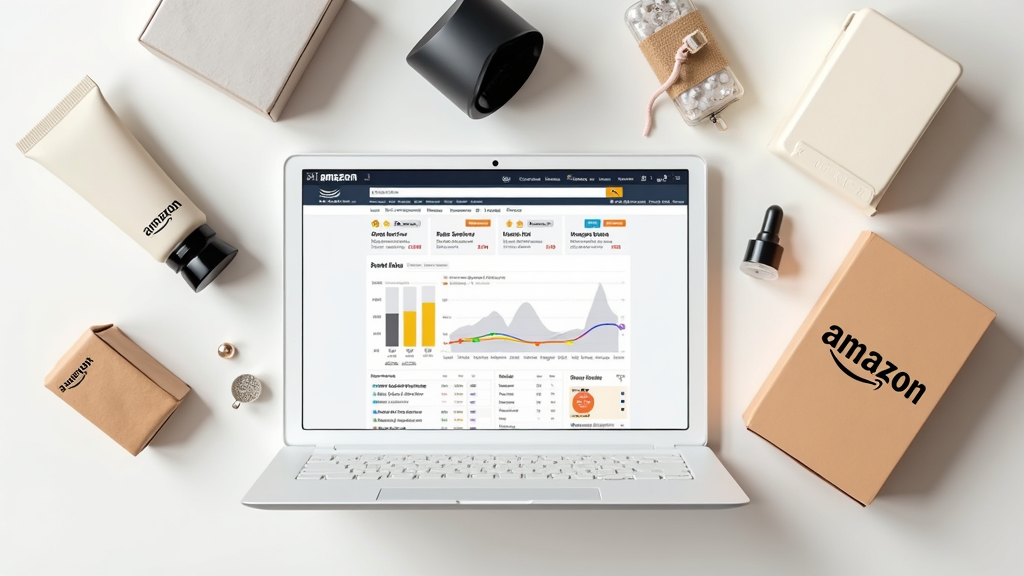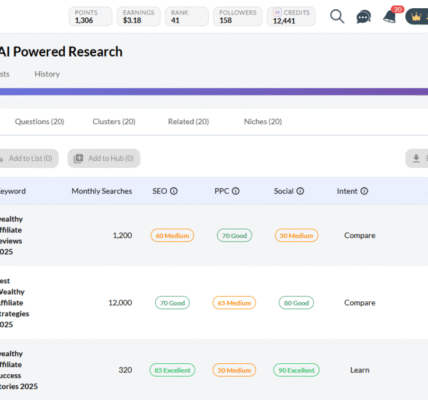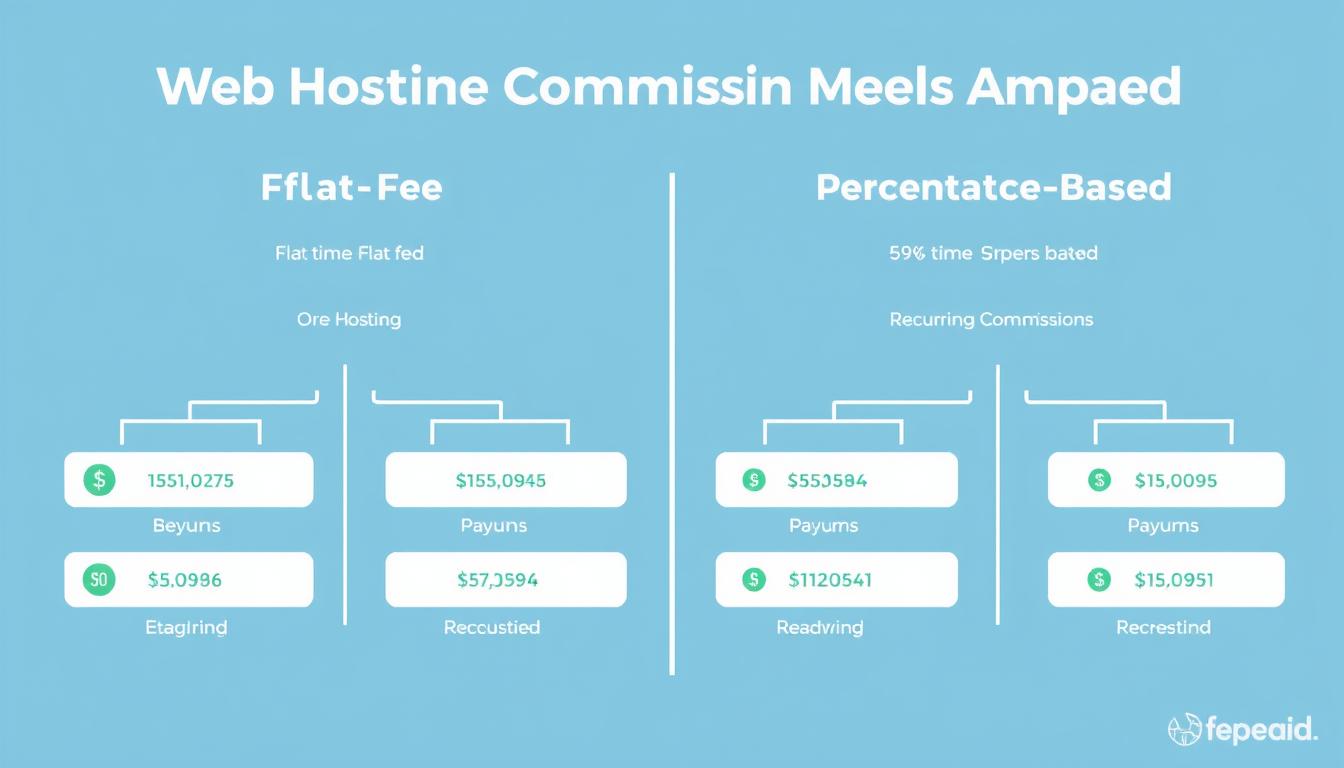How To Research And Identify Profitable Niches On Amazon
 If you’re thinking about selling on Amazon, one of the most important decisions is choosing the right niche. The products and markets you focus on can make a big difference in how successful your Amazon business becomes. Picking randomly or guessing can lead to a lot of wasted time and money. Instead, careful research gives you a better chance at finding profitable niches where you can thrive.
If you’re thinking about selling on Amazon, one of the most important decisions is choosing the right niche. The products and markets you focus on can make a big difference in how successful your Amazon business becomes. Picking randomly or guessing can lead to a lot of wasted time and money. Instead, careful research gives you a better chance at finding profitable niches where you can thrive.
I know how overwhelming all the choices can feel when you’re just starting. You might see thousands of products and wonder where to begin. Maybe you’re not sure if a market is too crowded or if people are even interested in a product. I’ve faced these same questions, and I’ve learned the process for finding profitable niches on Amazon doesn’t have to be complicated. There are steps you can take to make it a lot more straightforward.
This guide walks you through how I approach Amazon niche research to find products that sell well, have reasonable competition, and suit your interests or goals. By the end, you’ll know how to spot good opportunities, avoid some common traps, and start your Amazon business with confidence.
Step 1: Understand What Makes a Niche Profitable
Before searching for the best products, it helps to get clear on what a “profitable niche” means. On Amazon, a niche is a group of related products aimed at a particular type of customer or need. Profitable niches attract buyers but aren’t so full of sellers that it’s tough to compete.
Key Traits of Profitable Amazon Niches:
- Healthy demand. Regular search volume, strong rankings, and steady sales throughout the year.
- Moderate competition. Not so saturated that customers only buy from a few dominant brands, and not so empty that it means no one is searching.
- Reasonable profit margins. After Amazon fees and costs, you should still be able to make a noticeable profit per sale.
- Room for differentiation. Opportunities to stand out (better features, branding, bundles, or product quality).
I always start by thinking about these points, because they help filter out products that are too risky, unpopular, or simply not profitable on Amazon.
Step 2: Brainstorm Potential Niches Based on Interests and Trends
Even though the numbers are important, I find it useful to list ideas that interest me. When you care about a market, it’s easier to create better product listings and answer questions from buyers. Not every idea will be a winner, but passion can help you stick with the process and bring new energy to your Amazon shop.
Ways to Spark Niche Ideas:
- Think about problems you or your friends have solved with a product recently.
- Check trending topics on social media and Google Trends. New interests often come up that people are eager to buy products for.
- Look at popular categories on Amazon’s Best Sellers, Movers & Shakers, and Hot New Releases pages. These pages update constantly and give great ideas.
- Join online communities or forums (like Reddit product subreddits) and notice what people ask for or complain about.
I like to jot down at least 10-20 potential niches, no matter how silly they seem. Quantity helps, because even wild ideas can point to profitable opportunities after research. If you stretch your thinking, you might stumble upon a niche that nobody else has noticed yet.
Step 3: Use Amazon Tools and Data to Evaluate Demand
Once I have some niches, I want to see if people are actually buying these products on Amazon. Tools such as Amazon’s search bar, product categories, and Best Sellers lists are great starting points. You don’t need expensive software when beginning, though some free or trial tools can be helpful too. Over time, you can add more advanced tools to your toolkit.
How I Check If a Niche Has Demand:
- Type main keywords in the Amazon search bar. If Amazon suggests related keywords, people are searching for them and they’re popular among buyers.
- Look at the top products and their number of reviews. Hundreds or thousands of reviews typically show strong demand. If only a couple of listings have high reviews, double-check if it’s just a single seller dominating that spot.
- Scan Best Seller Ranks (BSR). Lower BSR numbers (closer to 1) in a category suggest higher sales and reliable buyer interest.
- Try tools like Jungle Scout (free estimator), Helium 10 (trial), or Keepa to estimate sales volume and spot sales patterns and trends in your chosen niche.
- Search Google Trends for your product keyword to see if interest is stable or growing. This helps avoid products that are dropping in popularity.
If I spot products with lots of reviews and steady BSR in multiple listings, not just one brand dominating, I know buyers are interested and there’s more than one seller succeeding. That can be a good signal for healthy demand and room for new sellers in the niche.
Step 4: Analyze the Competition and Opportunity
Even a growing market might be tough if the competition is too strong. I check how many other sellers are targeting a niche, what their products look like, and whether there’s any room to stand out. This step has helped me avoid niches where it’s almost impossible to break in and make real sales.
How I Size Up Competitors:
- Count the number of sponsored products at the top and see how many show up for main keywords. If everyone is paying for ads, it could be hard to compete without a budget.
- Look at product reviews. If most top sellers have over 1,000 reviews, it’ll be tougher for a new listing to compete. If there’s a mix—some with hundreds, some with fewer—there may be more room for new sellers who can offer something special.
- Check the quality of product photos, descriptions, and branding. Poor listings often mean room to compete with better content, sharper photos, or clearer information.
- See if top sellers have “Amazon’s Choice” or “Best Seller” badges. A few strong sellers is fine, but if every top slot is locked by big brands, I gain less confidence in entering unless my offer is unique and has real value for buyers.
I also visit some of the smaller sellers to understand how they’re getting traction. Maybe they offer bundles, better instructions, or faster shipping. This helps spark ideas for how I could offer something new or better myself, even with a tight budget or being new to Amazon selling.
Step 5: Calculate Profit Margins and Costs
Sales don’t matter much if you’re barely making money. On Amazon, fees can add up quickly. Factoring in costs early helps avoid disappointments later. I always check if a niche’s typical products leave some room for a decent profit after fees, shipping, and advertising.
Main Costs to Consider:
- Amazon FBA fees (fulfillment and storage). Factor in these fees from the beginning so there are no surprises.
- Referral fees (usually 8-15% depending on the category). These can stack up quickly, especially in lower-priced categories.
- Product cost (source price from suppliers or Alibaba). Before placing large orders, get quotes and samples to double-check quality.
- Shipping from supplier to Amazon warehouse, including customs or any taxes if importing from overseas suppliers.
- PPC advertising to gain visibility in search. Running a simple ad campaign can accelerate sales, but it does eat into your profit.
I recommend using the Amazon FBA Revenue Calculator to estimate profits for products you have in mind. If you’re left with only a sliver of profit, it’s worth reconsidering the niche or looking for cheaper sourcing. Having a wide enough margin lets you weather price drops, more competition, or higher ad costs as you grow.
Step 6: Look for Ways to Differentiate or Add Value
Making your product stand out is really important. Even good niches get saturated over time, so the ability to offer something unique—quality, features, bundles, or marketing—can make all the difference. This doesn’t always mean inventing something totally new; small improvements and branded packaging can help a lot. Make your product memorable and people may come back for more.
Questions I Ask To Find Differentiation:
- Are customers complaining about any features or problems in reviews? Fixing a small issue can win lots of fans.
- Can I create a bundle with helpful items that make sense together? Bundles can sometimes command higher prices without a huge increase in cost.
- Is there a gap in color choices, sizes, or patterns? Often buyers want something beyond the standard options.
- Would better instructions, packaging, or extras make the product more appealing? A product that’s easy to understand and use usually does better.
When I find a common complaint or request in a niche, I start to see possibilities for an improved or unique product. These small changes can set your listing apart and earn repeat business or five-star reviews. Being attentive to what buyers want is one of the best ways to give your Amazon business a boost.
Step 7: Validate Your Niche Choice Before Going All In
Before ordering a bunch of stock, I like to test the water. This could mean listing a small batch, running PPC ads, or getting feedback from online shopping groups. Even pre-selling to friends or a social media audience can give you quick signals about real demand. Testing first keeps your risk low and helps you learn important lessons early.
Ways I Validate a Niche:
- Find or order the minimum possible units (if using Alibaba, many suppliers can send samples or small batches without much fuss).
- List on Amazon and run a small PPC campaign to test interest and see which keywords bring clicks and sales.
- Check how quickly the initial products sell. Even modest sales can signal potential for expansion, while slow sales may suggest it’s time to try a new product.
- Ask for honest feedback from buyers about what they liked or didn’t like so you can improve quickly. Negative feedback can be turned into competitive advantages in your next batch.
If results show traction, I’ll consider larger orders and investing in branding or packaging. If not, I’ve saved myself the cost and hassle of buying bulk stock that’s hard to move. A little patience in this stage can save a lot of trouble later on.
Common Questions & Troubleshooting
What if I can’t find a niche that fits these criteria?
It’s pretty normal to go through many ideas before finding something that clicks. Sometimes even good niches look crowded at first. Patience and persistence pay off. Revisit your interests and look for newer trending products. Tools show fresh data all the time, so keep brainstorming and checking for that fresh opportunity. Talking with fellow sellers can also give you ideas you may have missed.
How do I know if a niche is too saturated?
- If most top sellers have thousands of reviews and rarely change, it’s very competitive and probably too tough for beginners.
- If big brands take all the Amazon Choice/Best Seller spots, getting traction may be hard unless you have a truly special offer.
- If everyone sells nearly identical products, try “long tail” or specific keywords (like “eco-friendly yoga mats for kids”) for less crowded subniches. Niche down as much as you can and see if new buyers are waiting there.
What if I have a small budget?
Lowcost, lightweight items often lower upfront risk. Print on demand, handmade items, or retail arbitrage can also offer ways to test niches without a major investment. Be realistic about margins, but remember small, steady wins add up. Focus on learning how the process works rather than making a huge profit right away.
Is seasonality a problem?
Some profitable Amazon niches spike in certain seasons (like winter gear or holiday items). Seasonal products can do well but might mean uneven cash flow. I prefer products with yearround demand, but adding a few seasonal winners can be a great boost that helps you keep interest up throughout the year.
Tips for Staying Focused and Growing Your Amazon Business
Sticking with Your Niche Research Process
- Track all your research in a spreadsheet so you don’t forget useful data or product ideas.
- Join Amazon seller communities or Facebook groups for support and new insights. Networking with others speeds up learning and keeps you sharp.
- Review your numbers regularly and adjust strategy when you see what’s working and what’s not.
- Be honest about what you enjoy selling. It’s easier to market and improve on products you actually care about, so don’t force yourself into something you dislike just for a quick buck.
I’ve found the most reliable results come from following these steps each time I consider a new niche. Building a successful Amazon business takes effort, but choosing the right niche can make a big difference. Careful research, patience, and a willingness to adapt help sellers get off to a good start and avoid common pitfalls. Even small improvements to your research process can get you better results over time.
Your Action Plan:
- Write down 10-20 product ideas that interest you, drawing from both your experience and trending topics.
- Check demand on Amazon using search, BSR, and free tools. The more thorough your check, the better your chances of finding a winner.
- Analyze top listings for competition and ways to stand out, considering bundles, colors, or improved packaging.
- Calculate expected profits and all costs before placing orders, making sure every dollar works hard for your goals.
- Test your best niche with a small order or initial listing before scaling up. Confirm what works, and don’t be afraid to change direction based on what you learn.
Starting your Amazon niche research today can set the stage for long term growth. What product or niche are you thinking about? Share your ideas or questions below! If you keep at it and adjust as you go, you’re setting yourself up for success on the Amazon adventure.



